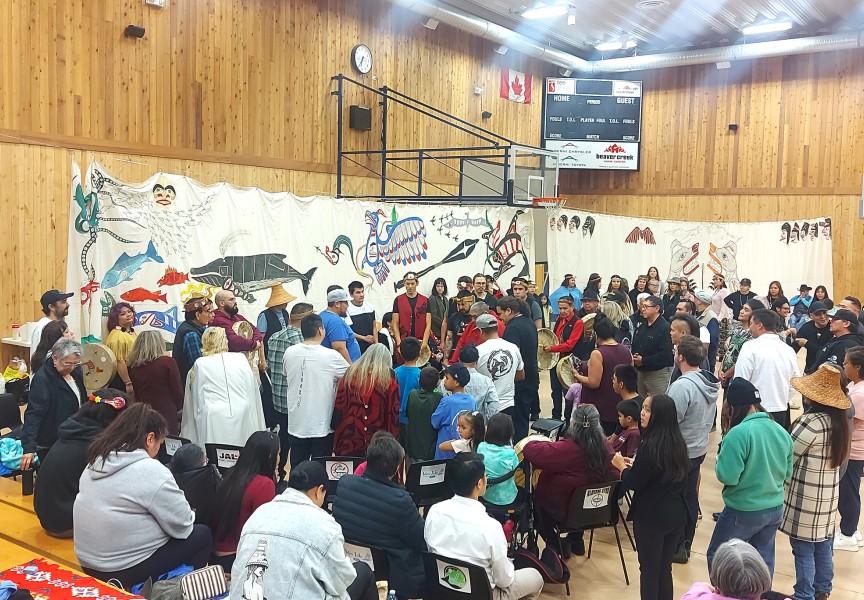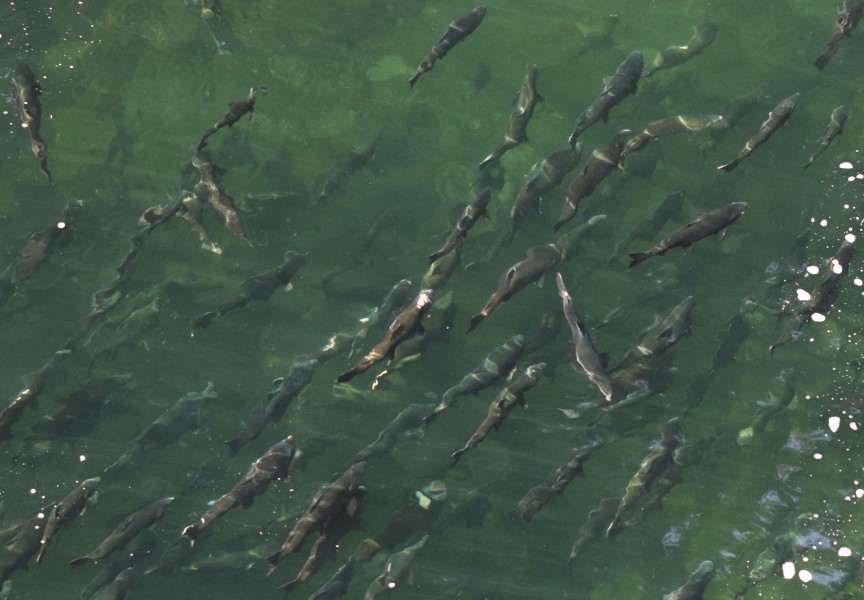In an effort to help the West Coast’s dwindling salmon stocks, this summer Fisheries and Oceans Canada announced 23 projects that would benefit from $13 million in federal and provincial funding.
But the B.C. Salmon Restoration and Innovation Fund’s first round of approved initiatives did not include any Nuu-chah-nulth-led projects - despite the fact that the First Nations call over 350 kilometres of the province’s coastal waters home. Traditional Nuu-chah-nulth territory comprises a significant proportion of British Columbia’s salmon habitat, stretching from Point-No-Point on southwest Vancouver Island to Brooks Peninsula in the north.
A total of 192 applications were received for the fund, which totals almost $143 million to be dispersed over five years. Twelve percent of submissions were approved for support in a DFO announcement on July 5, which states that the selected applications “demonstrate the closest alignment” with improving fisheries and seafood processing, restoring salmon habitat, as well as making aquaculture more sustainable. The next round of applications takes place in the fall.
Successful submissions included a mobile app launched by the Sport Fishing Institute to provide online information and catch monitoring, as well as another project by the SFI to maximise the social and economic potential of the sports fishing industry.
“The project aims to improve representation of the fishing community and increase participation in the fishing sector by youth, new Canadians and others,” stated the DFO release.
Infrastructure upgrades and habitat restoration work on the Lower Fraser River were also approved, following a submission by Tides Canada and the Watershed Watch Society, and an evaluation of the natural boundary of Cowichan Lake by the valley’s regional district and the Cowichan Tribes will receive funding.
But directly west of Cowichan Lake the Huu-ay-aht First Nations are wondering how to follow through with their plans to rebuild the Sarita River, which suffered decades of degradation from logging in the area. Their application to the Salmon Restoration and Innovation Fund was declined.
Huu-ay-aht Chief Councillor Robert Dennis Sr. believes that the DFO and the province need to give attention to all chinook rivers in B.C. to improve the state of the species.
“If there’s 600 chinook streams in B.C. and you’re only focusing on two or three, I don’t think you’re going to get the desired outcome,” he said. “In order to enhance our chinook stocks in B.C. we can’t just focus on the big rivers. All the smaller rivers around the province have a very significant contribution to the chinook population.”
Uu-a-thluk, the Nuu-chah-nulth Tribal Council’s fisheries department, made five applications to the salmon restoration fund - four of which were deferred to the next submission date, while one was denied.
In a July 25 letter, the Salmon Restoration Fund responded to Uu-a-thluk Program Director Eric Angel by agreeing to attend the next Council of Ha’wiih Forum on Fisheries Oct. 8 to present the fund’s objectives, eligible projects and adjudication procedures.
“We are also continuing to work through the 192 expressions of interest that we received in the spring and will be reaching out to proponents later in the summer and early fall to further discuss the remaining expressions of interest,” wrote Christie Whelan, the fund’s manager of partnerships and outreach.
Uu-a-thluk’s proposed initiatives include rebuilding recreational and commercial fishing opportunities for Nuu-chah-nulth, a partnership to manage herring fisheries, tools for salmon management and research, assessing chinook from hatcheries on the west coast of Vancouver Island, as well as a conservation project involving the recovery of genetic samples of chinook from Nootka and Kyuquot sounds.
Over his lifetime Dennis has witnessed the drastic decline of salmon in Huu-ay-aht territory. As a boy he recalls hand trolling with one line on the Sarita.
“Any direction you’d look you would see a salmon jumping in the bay. But now if you go there, you’re lucky to see a salmon jump,” said Dennis. “We started to see the change on the river in the ‘60s and ‘70s.”
By 1997, 62 per cent of the Sarita Watershed was logged, including 97 per cent of its flood plain, according to the Huu-ay-aht First Nations. Now the lower sections of the river are twice as wide as it once was, while landslides from logged slopes have deposited sediment into streams. This affects the spawning habitat of chinook, coho and chum salmon.
“It’s that over-logging that contributes a lot of the silt in the river,” said Dennis. “There’s boulders going down to the river where we’ve never seen them before.”
With its central importance to Huu-ay-aht life, the degraded state of the Sarita led the First Nation’s elders to mandate that the river receive “serious consideration”. In 2017 the Huu-ay-aht hired LGL Limited to plan the Sarita and Pachena Watershed Renewal Program, with the goal to find ways of revitalizing their ecosystems. Last year 10 of the First Nation’s members were employed in rebuilding the Sarita, but challenges have come in 2019 due to the halting of a partnership the Huu-ay-aht have with Steelhead LNG. Earlier this year the Vancouver-based company announced it would cease work on the Kwispaa LNG project planned for Sarita Bay.
“We really appreciate the funding we got to do that work,” said Dennis of how the Steelhead partnership benefitted the Sarita River. “A very significant portion of our accommodation went to the renewal work.”
Now the Huu-ay-aht depend on logging in their treaty land to finance the Sarita renewal, with $5 for every cubic metre of timber being reinvested into the river.
“Right now we’re the only ones putting funding into the renewal,” said Dennis. “We only get the money when the logging is done, so hopefully over the next three to four years we will be able to contribute one million dollars to the renewal work.”
The chief councillor suggests that if $2 per cubic metre logged were applied to river renewal work, a different outcome would result from the province’s efforts to reverse the decline of salmon stocks. No such measure is in place, despite a stipulation in Canada’s Fisheries Act stating that, “No person shall carry on any work or undertaking that results in the harmful alteration, disruption or destruction of fish habitat.”
“People come in - resource development - they make the profit, severely impact our lands and leave us with the damage,” reflected Dennis, stressing that such activity affects his Aboriginal fishing rights. “If your activity is impacting fishery there should be some kind of a contribution effort.”







